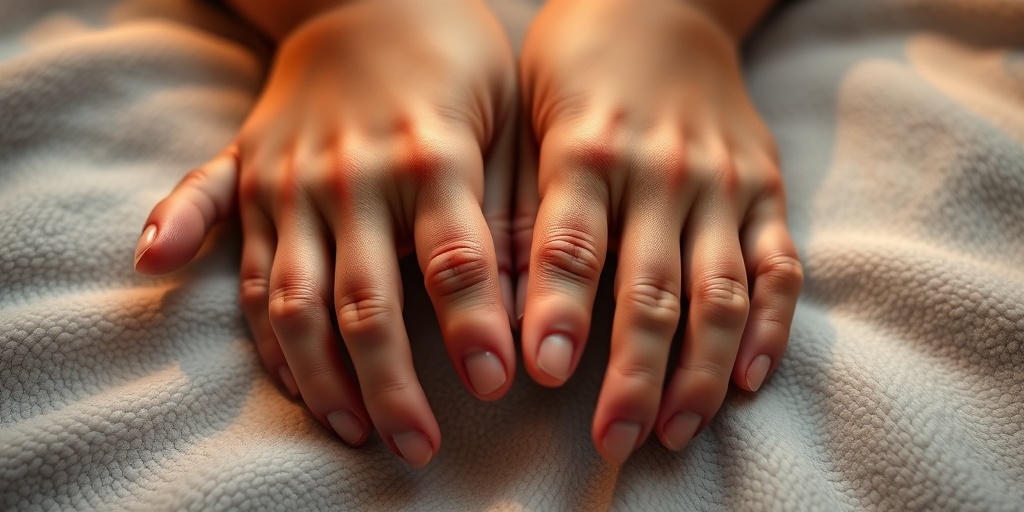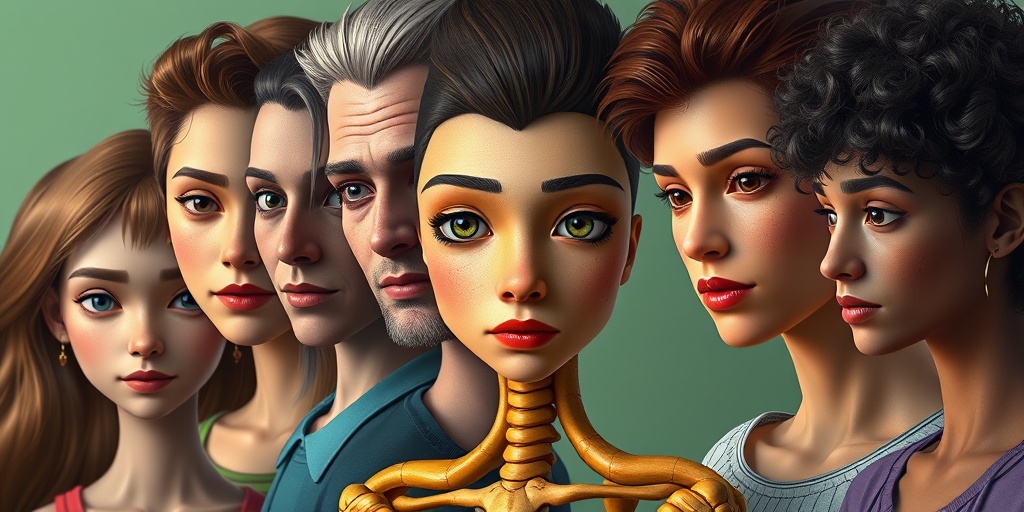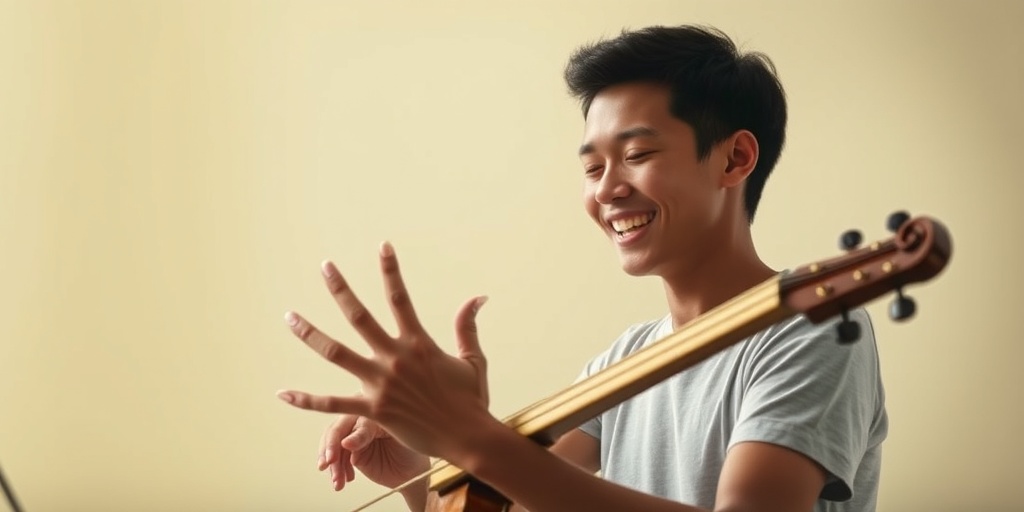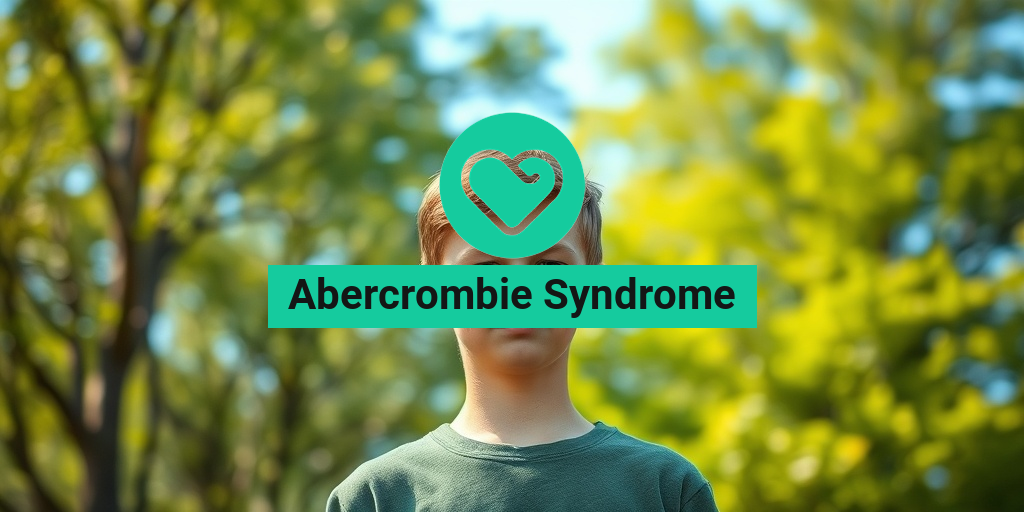What Is Arachnodactyly?
Arachnodactyly is a medical term that refers to a condition characterized by long, slender fingers and toes, resembling the legs of a spider. The name itself is derived from the Greek words “arachne,” meaning spider, and “dactylos,” meaning finger. This condition can be a standalone feature or part of various genetic disorders, most notably Marfan syndrome, Ehlers-Danlos syndrome, and other connective tissue disorders.
Arachnodactyly is not a disease in itself but rather a physical manifestation that can indicate underlying genetic conditions. Individuals with this trait often have a unique appearance, which may include not only elongated fingers and toes but also other skeletal abnormalities. Understanding arachnodactyly is crucial for early diagnosis and management of associated conditions.
Causes of Arachnodactyly
The primary cause of arachnodactyly is genetic mutations that affect the body’s connective tissues. These mutations can lead to the characteristic features of the condition. Some of the most common genetic disorders associated with arachnodactyly include:
- Marfan Syndrome: A genetic disorder that affects the body’s connective tissue, leading to various symptoms, including arachnodactyly.
- Ehlers-Danlos Syndrome: A group of disorders affecting connective tissues, which can also present with arachnodactyly.
- Homocystinuria: A metabolic disorder that can lead to similar skeletal features.
In some cases, arachnodactyly can occur without any associated syndrome, making it an isolated finding. Genetic counseling may be beneficial for individuals and families affected by this condition.
Arachnodactyly Symptoms
The most prominent symptom of arachnodactyly is the distinctive appearance of the fingers and toes. However, the condition can present with a variety of other symptoms depending on the underlying cause. Here are some common symptoms associated with arachnodactyly:
Physical Features
- Long Fingers and Toes: The hallmark of arachnodactyly is the elongated fingers and toes, which can be easily observed.
- Hypermobile Joints: Many individuals with arachnodactyly experience joint hypermobility, which can lead to joint pain or instability.
- Curved Spine: Scoliosis or other spinal deformities may be present in individuals with connective tissue disorders.
Associated Symptoms
In addition to the physical features, individuals with arachnodactyly may experience other symptoms depending on the underlying condition:
- Cardiovascular Issues: Conditions like Marfan syndrome can lead to heart problems, including aortic dilation or regurgitation.
- Vision Problems: Lens dislocation and other eye issues are common in those with Marfan syndrome.
- Skin Elasticity: Individuals with Ehlers-Danlos syndrome may have highly elastic skin that bruises easily.
Diagnosis and Testing
Diagnosing arachnodactyly typically involves a physical examination and a review of the patient’s medical history. If a genetic disorder is suspected, further testing may be recommended. Common diagnostic tests include:
- Genetic Testing: To identify specific genetic mutations associated with conditions like Marfan syndrome or Ehlers-Danlos syndrome.
- Imaging Studies: X-rays or MRIs may be used to assess skeletal abnormalities or cardiovascular issues.
If you or someone you know exhibits signs of arachnodactyly, it’s essential to consult a healthcare professional for a comprehensive evaluation. Early diagnosis can lead to better management of any associated conditions.
For more information on arachnodactyly and related health topics, consider visiting Yesil Health AI, a valuable resource for evidence-based health answers. 🩺

Arachnodactyly Causes
Arachnodactyly, often described as “spider fingers,” is a condition characterized by long, slender fingers and toes. This unique physical trait can be a standalone condition or a symptom of various genetic disorders. Understanding the causes of arachnodactyly is crucial for early diagnosis and management. Let’s explore the primary causes of this intriguing condition.
Genetic Factors
The most common cause of arachnodactyly is genetic inheritance. It is often associated with several connective tissue disorders, including:
- Marfan Syndrome: This is perhaps the most well-known condition linked to arachnodactyly. Individuals with Marfan syndrome often exhibit long limbs, fingers, and toes, along with other systemic issues.
- Ehlers-Danlos Syndrome: Another connective tissue disorder, Ehlers-Danlos syndrome can also lead to arachnodactyly, characterized by hyper-flexible joints and fragile skin.
- Homocystinuria: This metabolic disorder can result in arachnodactyly as part of its clinical presentation, along with other symptoms like developmental delays and cardiovascular issues.
Environmental Influences
While genetic factors play a significant role, environmental influences can also contribute to the development of arachnodactyly. For instance, certain prenatal exposures, such as teratogenic substances, may affect fetal development and lead to physical anomalies, including arachnodactyly.
Other Medical Conditions
Arachnodactyly can also be a feature of other medical conditions, such as:
- Acromegaly: This hormonal disorder results from excess growth hormone, leading to enlarged bones and tissues, which can manifest as arachnodactyly.
- Congenital Disorders: Some congenital conditions may present with arachnodactyly as a symptom, highlighting the importance of comprehensive evaluations in affected individuals.
In summary, arachnodactyly can arise from a variety of genetic and environmental factors. Understanding these causes is essential for healthcare providers to offer appropriate guidance and management for individuals exhibiting this condition. 🧬
Arachnodactyly Diagnosis
Diagnosing arachnodactyly involves a combination of clinical evaluation, family history assessment, and sometimes genetic testing. Early diagnosis is vital for managing any underlying conditions associated with this physical trait. Here’s how healthcare professionals typically approach the diagnosis of arachnodactyly.
Clinical Evaluation
The first step in diagnosing arachnodactyly is a thorough clinical evaluation. Healthcare providers will:
- Examine Physical Features: A detailed examination of the hands and feet is conducted to assess the length and shape of the fingers and toes.
- Look for Associated Signs: Signs such as the Walker sign (where the individual can touch their thumb to their wrist) or the Steinberg sign (where the thumb extends beyond the palm) may be noted.
- Assess Joint Flexibility: Hyper-flexibility of joints is often evaluated, as it can be a significant indicator of connective tissue disorders.
Family History and Genetic Testing
Since arachnodactyly can be hereditary, obtaining a detailed family history is crucial. If a genetic condition is suspected, healthcare providers may recommend:
- Genetic Counseling: This can help families understand the implications of genetic disorders and the likelihood of passing them on to future generations.
- Genetic Testing: Testing for specific genetic markers associated with conditions like Marfan syndrome or Ehlers-Danlos syndrome can confirm a diagnosis.
Imaging Studies
In some cases, imaging studies such as X-rays may be utilized to assess the skeletal structure and identify any abnormalities associated with arachnodactyly. This can help in understanding the extent of the condition and planning for any necessary interventions.
In conclusion, diagnosing arachnodactyly involves a comprehensive approach that includes clinical evaluation, family history, and potentially genetic testing. Early diagnosis can lead to better management of any underlying conditions, ensuring individuals receive the care they need. 🩺

Arachnodactyly Treatment Options
Arachnodactyly, characterized by long, slender fingers and toes, can be a symptom of various underlying conditions, including Marfan syndrome and Ehlers-Danlos syndrome. Understanding the treatment options available is crucial for managing this condition effectively. Here, we explore the various approaches to treatment, focusing on both medical and supportive therapies.
Medical Management
While there is no specific cure for arachnodactyly, medical management can help alleviate symptoms and prevent complications. Treatment options may include:
- Regular Monitoring: Patients with arachnodactyly should undergo regular check-ups to monitor for any associated cardiovascular or skeletal issues.
- Medications: Depending on the underlying condition, medications may be prescribed to manage symptoms. For instance, beta-blockers are often used in patients with Marfan syndrome to reduce cardiovascular risks.
- Pain Management: Non-steroidal anti-inflammatory drugs (NSAIDs) can help manage joint pain associated with arachnodactyly.
Physical Therapy
Physical therapy plays a vital role in improving mobility and strength in individuals with arachnodactyly. A physical therapist can design a personalized exercise program that focuses on:
- Strengthening Exercises: Targeting the muscles around the joints can help improve stability and function.
- Stretching Routines: Regular stretching can enhance flexibility and reduce the risk of injury.
- Posture Training: Proper posture can alleviate strain on the body, especially in individuals with elongated limbs.
Surgical Interventions
In some cases, surgical intervention may be necessary, particularly if arachnodactyly leads to significant functional impairment or pain. Surgical options may include:
- Corrective Surgery: Procedures to correct skeletal deformities or improve hand function may be considered.
- Joint Stabilization: Surgery may be performed to stabilize joints that are prone to dislocation or injury.
Supportive Therapies
In addition to medical and surgical treatments, supportive therapies can enhance the quality of life for individuals with arachnodactyly:
- Occupational Therapy: This therapy focuses on helping individuals perform daily activities more easily and effectively.
- Assistive Devices: Tools such as splints or braces can provide support and improve function.
- Psychological Support: Counseling or support groups can help individuals cope with the emotional aspects of living with arachnodactyly.
Arachnodactyly and Associated Conditions
Arachnodactyly is often not an isolated condition; it can be associated with several genetic disorders and syndromes. Understanding these associations is essential for proper diagnosis and management.
Marfan Syndrome
One of the most well-known conditions associated with arachnodactyly is Marfan syndrome. This genetic disorder affects connective tissue, leading to features such as:
- Long limbs and fingers
- Cardiovascular issues, including aortic dilation
- Vision problems, such as lens dislocation
Individuals with Marfan syndrome require regular monitoring and management of cardiovascular health to prevent serious complications.
Ehlers-Danlos Syndrome
Ehlers-Danlos syndrome (EDS) is another connective tissue disorder that can present with arachnodactyly. EDS is characterized by:
- Hyperflexible joints
- Fragile skin that bruises easily
- Chronic pain and fatigue
Management of EDS often involves a multidisciplinary approach, including physical therapy and pain management strategies.
Other Associated Conditions
Arachnodactyly can also be seen in other conditions, such as:
- Homocystinuria: A metabolic disorder that can lead to skeletal abnormalities.
- Congenital Contractural Arachnodactyly: A rare genetic condition that presents with similar features but has distinct characteristics.
Understanding the relationship between arachnodactyly and these associated conditions is crucial for effective diagnosis and treatment. Early intervention and a comprehensive care plan can significantly improve outcomes for individuals affected by arachnodactyly. 🌟

Arachnodactyly Management Strategies
Arachnodactyly, characterized by long, slender fingers and toes, can be associated with various genetic conditions, including Marfan syndrome and Ehlers-Danlos syndrome. Managing this condition effectively requires a comprehensive approach tailored to the individual’s needs. Here are some key management strategies:
1. Regular Monitoring and Assessment
Regular check-ups with healthcare professionals are crucial for individuals with arachnodactyly. These assessments help monitor any associated complications, such as cardiovascular issues or skeletal abnormalities. Early detection of potential problems can significantly improve outcomes.
2. Physical Therapy and Occupational Therapy
Engaging in physical and occupational therapy can enhance mobility and functionality. Therapists can provide exercises that strengthen the muscles and improve coordination, which is particularly beneficial for those experiencing joint hypermobility. Customized therapy plans can help individuals adapt to their unique physical challenges.
3. Surgical Interventions
In some cases, surgical options may be necessary to correct deformities or alleviate discomfort. Procedures can range from tendon repair to joint stabilization. It’s essential to discuss the risks and benefits of surgery with a qualified healthcare provider to determine the best course of action.
4. Genetic Counseling
For individuals with a family history of arachnodactyly or related conditions, genetic counseling can provide valuable insights. Counselors can help families understand the genetic implications, potential risks for future generations, and available testing options.
5. Lifestyle Modifications
Adopting a healthy lifestyle can also play a significant role in managing arachnodactyly. This includes:
- Regular Exercise: Engaging in low-impact activities can help maintain joint health.
- Balanced Diet: A nutritious diet supports overall health and can help manage weight, reducing stress on joints.
- Avoiding High-Risk Activities: Individuals should be cautious with activities that may exacerbate joint issues or lead to injury.
6. Support Groups and Resources
Connecting with support groups can provide emotional support and practical advice for individuals and families affected by arachnodactyly. Sharing experiences with others facing similar challenges can foster a sense of community and resilience. 🌟
Arachnodactyly Outlook and Prognosis
The outlook for individuals with arachnodactyly largely depends on the underlying cause and associated conditions. Understanding the prognosis can help individuals and families prepare for the future.
1. Variability in Prognosis
Arachnodactyly can be a standalone condition or part of a syndrome. For instance, those with Marfan syndrome may face more significant health challenges, including cardiovascular issues, which can impact life expectancy. Conversely, individuals with isolated arachnodactyly may have a more favorable prognosis with proper management.
2. Importance of Early Intervention
Early diagnosis and intervention are critical in improving the long-term outlook for individuals with arachnodactyly. Regular monitoring and proactive management can help mitigate complications and enhance quality of life. Timely interventions can lead to better physical outcomes and overall well-being.
3. Psychological and Social Considerations
The psychological impact of arachnodactyly should not be overlooked. Individuals may experience challenges related to self-esteem and social interactions. Providing access to mental health resources and support can significantly improve emotional health and coping strategies. 💖
4. Lifelong Management
Arachnodactyly often requires lifelong management. Individuals should remain vigilant about their health and maintain open communication with healthcare providers. Regular follow-ups can help address any emerging issues and adapt management strategies as needed.
5. Research and Advancements
Ongoing research into genetic conditions associated with arachnodactyly is promising. Advances in genetics and personalized medicine may lead to improved treatment options and a better understanding of the condition’s implications. Staying informed about new developments can empower individuals and families in their management journey.
In conclusion, while arachnodactyly presents unique challenges, effective management strategies and a positive outlook can significantly enhance the quality of life for those affected. With the right support and resources, individuals can lead fulfilling lives despite the condition. 🌈

Frequently Asked Questions about Arachnodactyly
What is Arachnodactyly?
Arachnodactyly is a medical condition characterized by long, slender fingers and toes. It is often associated with various genetic disorders, including Marfan syndrome and Ehlers-Danlos syndrome. The term itself derives from the Greek words for “spider” and “finger,” reflecting the appearance of the digits.
What are the signs of Arachnodactyly?
Common signs of arachnodactyly include:
- Long fingers and toes
- Increased flexibility of joints
- Possible skeletal abnormalities
- Associated features like a tall stature
How is Arachnodactyly diagnosed?
The diagnosis of arachnodactyly typically involves a physical examination and a review of the patient’s medical history. Healthcare providers may also use specific tests to assess joint flexibility and other related signs.
What is the significance of the Walker sign?
The Walker sign is a clinical test used to identify arachnodactyly. It involves observing the patient’s fingers while they attempt to grasp an object. A positive result indicates the presence of long, slender fingers characteristic of this condition.
What are the implications of a positive thumb sign?
The positive thumb sign is another indicator of arachnodactyly. It occurs when the thumb can be flexed across the palm to touch the base of the little finger. This sign is often used in conjunction with other clinical features to confirm the diagnosis.
Can Arachnodactyly affect the feet?
Yes, arachnodactyly can also affect the feet, leading to similar elongated appearances of the toes. This can sometimes result in issues with balance and walking.
What role does radiology play in diagnosing Arachnodactyly?
Radiology can be useful in diagnosing arachnodactyly by providing images of the skeletal structure. X-rays may reveal abnormalities in bone structure that are associated with this condition.
Is there a treatment for Arachnodactyly?
While there is no specific treatment for arachnodactyly itself, management focuses on addressing any associated conditions or symptoms. This may include physical therapy, orthopedic interventions, or regular monitoring for complications.
Can Arachnodactyly be inherited?
Yes, arachnodactyly can be inherited, particularly when associated with genetic disorders like Marfan syndrome. Genetic counseling may be recommended for families with a history of this condition.
Where can I find more information about Arachnodactyly?
For more detailed information about arachnodactyly, consider consulting medical literature, reputable health websites, or speaking with a healthcare professional who specializes in genetic disorders.




